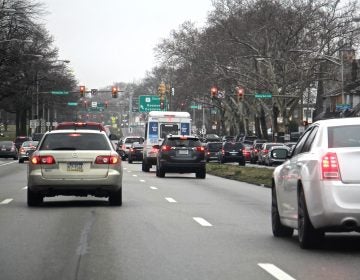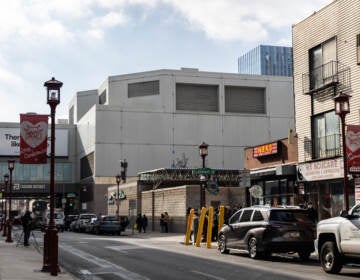DAGspace: Zoning Reform Myth Busting


Zoning Reform Myth Busting
by Timothy Kerner
Philadelphia’s Zoning Reform process has officially moved from the Zoning Code Commission to City Council, and council members are now attempting to understand the myriad consequences, both intended and otherwise, that would come about should they pass the proposed code. This is not an easy task, and it is made more difficult by a variety of myths and misunderstandings surrounding our zoning code and its implementation.
I would like to offer three controversial, myth-busting opinions that stem from my experiences as a neighborhood zoning committee chair, an architect, a planner, and a home owner. These opinions are relevant to the difficult considerations now before council.
Myth number 1: Zoning variances are bad
The Zoning Code Commission has been working toward the elimination of the need for zoning variances. In general terms, this is a good direction and many aspects of the new code will contribute to this goal in appropriate ways. However, in the name of variance reduction, the proposed code liberalizes the review requirements for several uses that can have significant impacts on residential neighborhoods. These uses include large group homes, single room occupancies, educational facilities, active recreation areas, and communication antennae.
According to the proposed code, these uses could be established “by-right” in many residential neighborhoods across the city, without any assessment of their neighborhood impacts. For certain other uses, such as multi-family housing and religious assemblies, zoning restrictions that take account of their neighborhood impacts have been removed.
It is my sense that this liberalization has gone too far. That is not to say that these uses do not belong in residential neighborhoods. But their neighborhood impact should be considered on a case-by-case basis. That is why we have community zoning committees and the Zoning Board of Adjustment. And if a specific use is appropriate for a property, and it would not harm the surroundings, then a variance, or, in some cases, a special exception, may be appropriate.
And that’s not a bad thing. In fact, the variance review process is a good thing because it allows for the assessment of specific impacts on particular places. Philadelphia is a complex and changing city where static rules simply can’t define the highest and best use of every piece of land.
Myth number 2: Community review hurts development
Community review of large development projects is not a problem, it is a necessity. Members of community zoning committees possess essential and intimate knowledge about their surroundings. The exchange of information at zoning review meetings has the capacity to enhance projects greatly, contributing to the quality of the urban environment and, sometimes, the developer’s bottom line.
So, what’s the problem? The problems with community review have included unclear review procedures, competing community groups with geographical conflicts, atmospheres of distrust between developers and communities, and, in some cases, unrealistic demands by community groups.
These problems can be answered by creating a registration process for community groups that assigns geographic boundaries and by setting clear and fair procedural guidelines for community review. These processes and procedures have not yet been fully developed, probably because this is such a controversial topic. The Zoning Code Commission and City Council should develop these guidelines with meaningful input from community groups. The knowledge is there; it should be utilized.
Myth number 3: Phased implementation will be easier
It has been suggested that it will be easier to digest the new zoning code if we have some transition period–one to five years have been mentioned–during which the old zoning code and the new one would both be in force. One proposal is to phase in the new zoning code geographically, while another suggests a “pick-your-code” time period, allowing for a propertyby-property choice between zoning codes. There is nothing simple about either of these proposals. It would be as if we couldn’t choose between two restaurants, so we decided to dine at both, simultaneously.
Ask any L&I examiner if it’s easy to figure out code compliance with one code in place, and now add another code for their consideration. Would community reviews be easier? Would land value assessments be easier? Certainly not. So, let’s not handicap ourselves with a complicated solution born from timidity. Let’s be brave, set a date and bite the bullet. Any zoning applications received prior to that date would be reviewed in accordance with the existing code and any applications received after that date would follow the proposed code. It’s the simplest and the easiest way.
So, to recap,
1. We should not over liberalize the zoning code simply for the sake of variance reduction. The current review requirements for problematic use classifications should be retained in the new zoning code to allow the variance review process to continue to assess the impact of these uses in specific locations.
2. We should not shortchange the community review process. City Council should assure that zoning reform includes clear and fair guidelines for meaningful community review and make sure that these guidelines are developed with input from the communities.
3. Issues remain that need to be addressed, but the proposed code is a significant improvement over the old one. So, after correcting these issues, City Council should be courageous and pass the new code with a specific date for a clean transfer. It’s time to leave the old code behind and move forward with the new.
————-
Timothy Kerner, AIA, is principal of Terra Studio LLC, an architecture and urban design firm in Center City. He has chaired the Center City Residents Association Zoning Committee and the Mayor’s Transition Team on Planning and Development. This essay is adapted from his testimony to City Council on September 14, 2011.
DAGspace is a monthly opinion column written my members of the Design Advocacy Group (DAG), with the goal of promoting good design by encouraging thoughtful public discussion of design matters. The mission of the Design Advocacy Group is to provide an independent and informed public voice for design quality in the architecture and physical planning of the Philadelphia region.
The next DAG meeting is October 6 at 8am, at the Center for Architecture, 1218 Arch Street.
In addition to appearing on DAG’s website, you’ll be able to read DAGspace on Eyes on the Street every month. You can read previous DAGSpace articles here.
WHYY is your source for fact-based, in-depth journalism and information. As a nonprofit organization, we rely on financial support from readers like you. Please give today.







